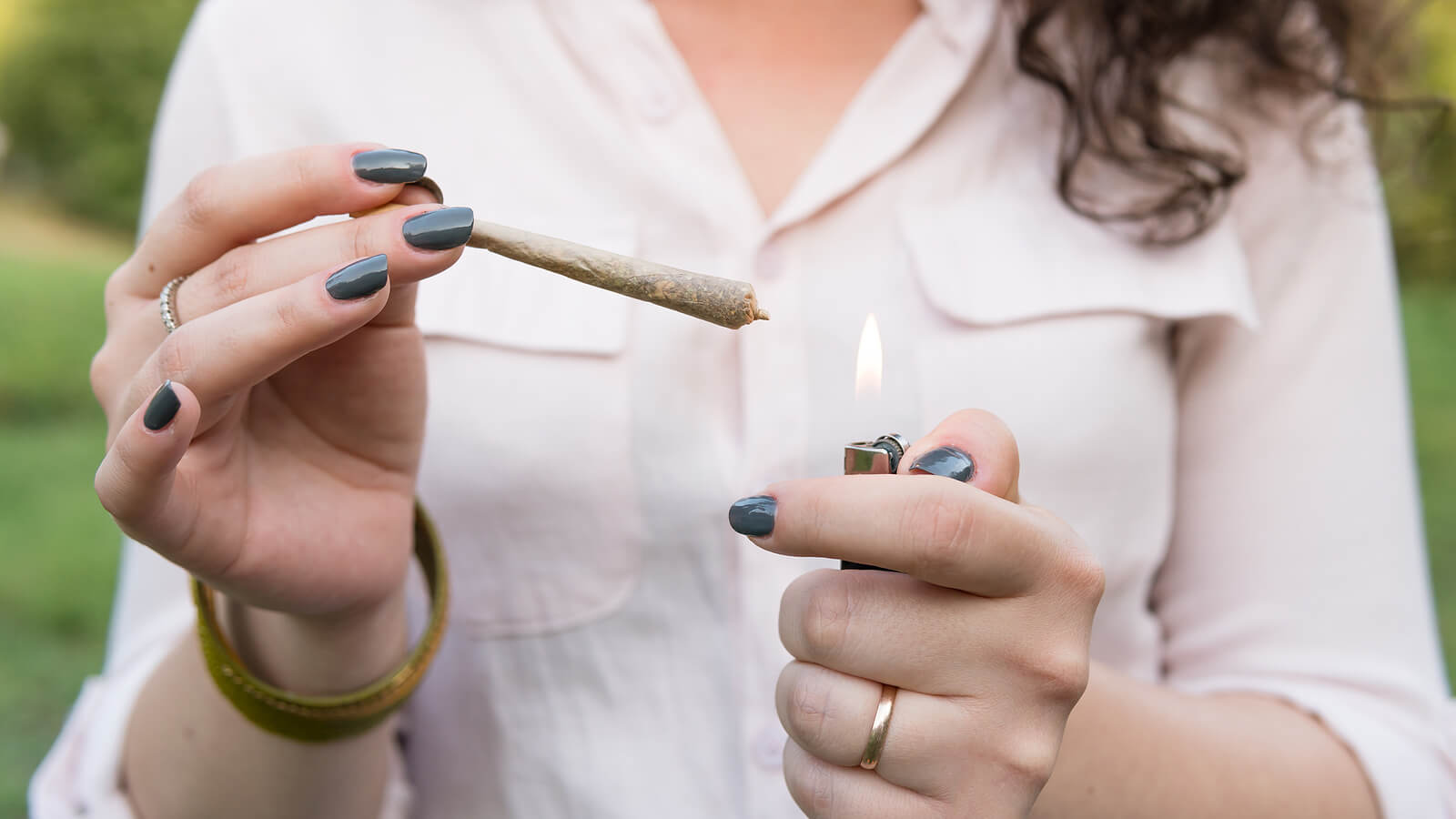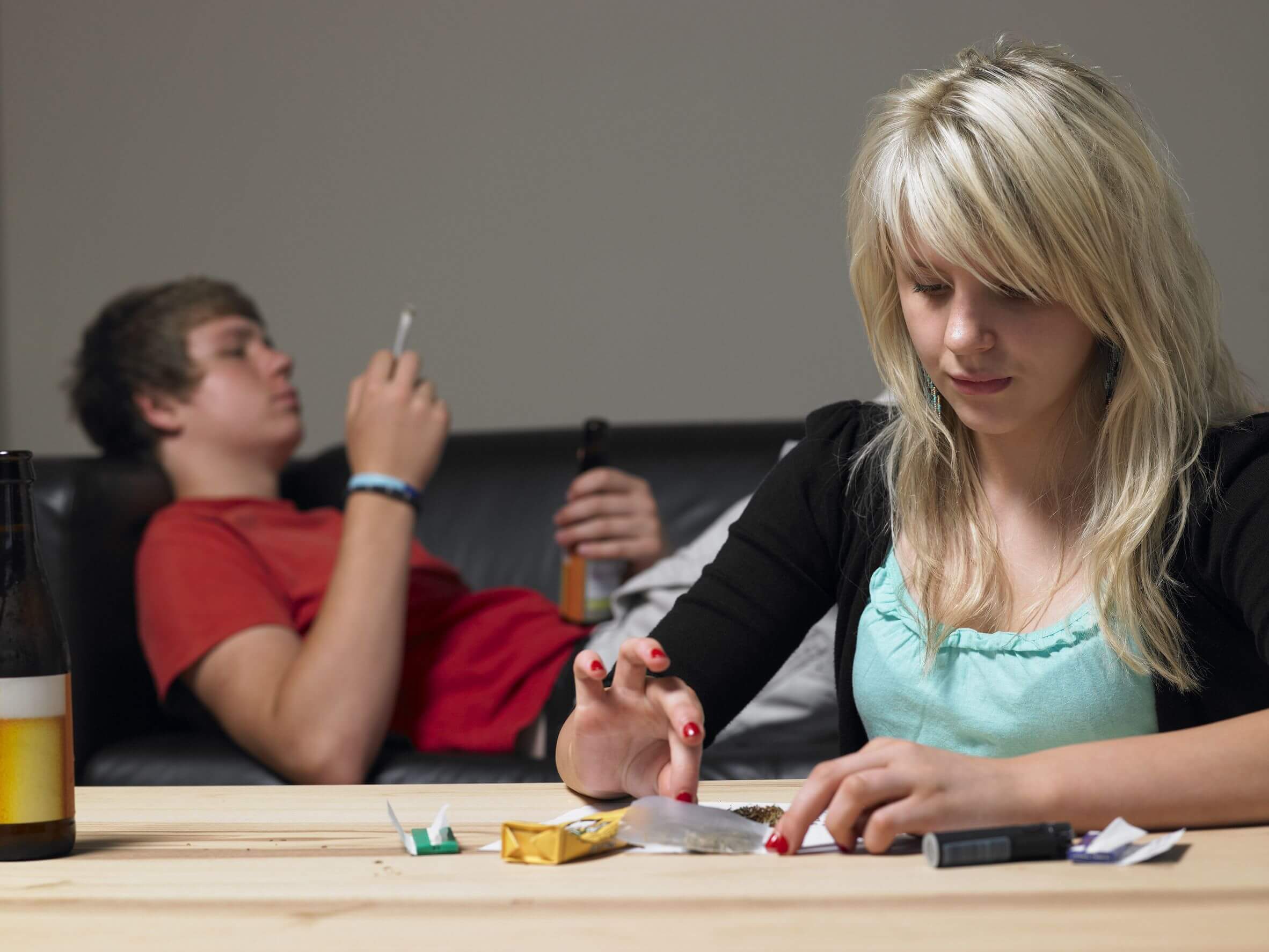How to Help a Child Who Smokes Marijuana


Written and verified by the psychologist Laura Ruiz Mitjana
The use of substances such as marijuana is becoming more and more widespread among adolescents and even younger children. For this reason, many parents ask themselves how they can help a child who smokes marijuana.
Many times, behind the causes, we find the need of adolescents to be part of a group, to have the approval of others, to be “liked”, the desire to try new things, the addiction generated by the substance itself, etc.
In these cases, it will be important to delve into the motivations and, above all, to seek a conversation with your child to address the issue. You shouldn’t do it in a confrontational or authoritarian because that will only cause your child to close themself off from you. You must approach it from the point of view of active listening and empathy.
“The time of adolescence can make the difference between a lifetime of success or a lifetime of failure.”
-Anonymous-
How to help a child who smokes marijuana?
Although this is a complex issue, which often requires professional help, here are 6 key ideas on how to help a child who smokes marijuana. They’re small actions to begin to address the problem with them, but that can lead to other decisions, depending on the evolution of the problem.

Don’t confront them
When initiating the first contact with your child to talk about their use of marijuana, try not to start out by confronting them. Establish it as a conversation, as a vehicle to discover information and not to punish them or back them into a corner.
Therefore, it’s a good idea to face the situation calmly and serenely, even if it’s difficult. It’s best to approach the subject normally and not to impose authority.
Find a good time to talk
Another key idea to help a child who smokes marijuana is to find the best time to have that conversation. At a time when they seem calm, create a warm and trusting atmosphere so that they feel more confident and comfortable talking and telling you about the reasons that have led them to pick up this habit.
In order to help a child who smokes marijuana, you must take into account their age
Talking to a pre-teen isn’t the same as talking to a teenager or an older child. Teens are generally more reluctant to initiate communication. At this age, children tend to seek transgression of the rules and acceptance by their peer group.
Dialogue and reflect with your child
If your child tells you that they smoke joints to escape from their problems, for example, try to help them reason. Discuss your child’s concerns and what other ways they can deal with these issues. You can offer them alternative strategies.
If the reason they give you is that they like it a lot, also try to help them reflect. Delve into what it is that the joints produce in them, their motives, the consequences, etc. You can even suggest asking for professional help.
Read also: How Drugs Affect Cognitive Development in Teenagers
Accompany them
When it comes to helping a child who smokes marijuana, it’s not about punishing or victimizing them, but about making them feel that you’re on their side. That you seek to understand them and that you’ll be by their side no matter what they do.
This doesn’t mean that you accept everything they do, but that you try to find a way to connect with them and make them feel understood (even if you don’t share their decisions).
Talk to your child who smokes marijuana about the pros and cons
When you ask your child to reflect, you can suggest the exercise of finding the pros and cons of smoking joints. They can even write them down in a notebook. The idea is for them to see that you’re not their enemy, but their ally, and that you can come to understand the “good things” they experience when smoking joints.
However, it will be important to emphasize the bad things. Help them become aware of them, visualizing the good and bad aspects in the short and long term.
How does marijuana affect the adolescent brain?
According to a study conducted in 2019 by researchers at the University of Vermont (USA) published in the Journal of Neuroscience, the brains of minors who’ve used marijuana only once or twice in life have more gray matter volume in the amygdala and hippocampus, compared to those who never tried the substance.
The amygdala is the brain structure related to fear and emotions, while the hippocampus is involved in the development of memory and spatial skills. The same research states that the differences in both structures persisted, despite the control of variables such as sex, socioeconomic status, and alcohol or tobacco consumption.
On the other hand, that work demonstrated the association between increased gray matter volume in low-level marijuana users and assessments of reasoning and anxiety.
Read also: My Child Does Drugs: What Should I Do?

“Development in adolescence is characterized by oscillation between progress and regression.”
-Anonymous-
Helping a child who smokes marijuana: Addressing the situation
Coping with the fact that you have a child who smokes marijuana is a delicate issue. You must give them enough confidence, but also guide them so that they don’t fall into addictive behaviors. Your reaction must be balanced: Neither punitive nor permissive (alluding to your own youthful experiences), but never disinterested. You have to take charge of the problem, investigate the causes, and look for solutions.
Drugs are very feared by parents who only want to best for their children. This is because drugs in general, even if some are more harmless than others, always have a negative impact on physical and mental health.
So, if you think your child has started smoking marijuana, don’t run away from the problem or try to minimize it. The sooner you talk to your child about it, the easier it will be to work on change and ask for help if necessary. Remember that there are specialized centers that can offer you the appropriate care to deal with this problem.
The use of substances such as marijuana is becoming more and more widespread among adolescents and even younger children. For this reason, many parents ask themselves how they can help a child who smokes marijuana.
Many times, behind the causes, we find the need of adolescents to be part of a group, to have the approval of others, to be “liked”, the desire to try new things, the addiction generated by the substance itself, etc.
In these cases, it will be important to delve into the motivations and, above all, to seek a conversation with your child to address the issue. You shouldn’t do it in a confrontational or authoritarian because that will only cause your child to close themself off from you. You must approach it from the point of view of active listening and empathy.
“The time of adolescence can make the difference between a lifetime of success or a lifetime of failure.”
-Anonymous-
How to help a child who smokes marijuana?
Although this is a complex issue, which often requires professional help, here are 6 key ideas on how to help a child who smokes marijuana. They’re small actions to begin to address the problem with them, but that can lead to other decisions, depending on the evolution of the problem.

Don’t confront them
When initiating the first contact with your child to talk about their use of marijuana, try not to start out by confronting them. Establish it as a conversation, as a vehicle to discover information and not to punish them or back them into a corner.
Therefore, it’s a good idea to face the situation calmly and serenely, even if it’s difficult. It’s best to approach the subject normally and not to impose authority.
Find a good time to talk
Another key idea to help a child who smokes marijuana is to find the best time to have that conversation. At a time when they seem calm, create a warm and trusting atmosphere so that they feel more confident and comfortable talking and telling you about the reasons that have led them to pick up this habit.
In order to help a child who smokes marijuana, you must take into account their age
Talking to a pre-teen isn’t the same as talking to a teenager or an older child. Teens are generally more reluctant to initiate communication. At this age, children tend to seek transgression of the rules and acceptance by their peer group.
Dialogue and reflect with your child
If your child tells you that they smoke joints to escape from their problems, for example, try to help them reason. Discuss your child’s concerns and what other ways they can deal with these issues. You can offer them alternative strategies.
If the reason they give you is that they like it a lot, also try to help them reflect. Delve into what it is that the joints produce in them, their motives, the consequences, etc. You can even suggest asking for professional help.
Read also: How Drugs Affect Cognitive Development in Teenagers
Accompany them
When it comes to helping a child who smokes marijuana, it’s not about punishing or victimizing them, but about making them feel that you’re on their side. That you seek to understand them and that you’ll be by their side no matter what they do.
This doesn’t mean that you accept everything they do, but that you try to find a way to connect with them and make them feel understood (even if you don’t share their decisions).
Talk to your child who smokes marijuana about the pros and cons
When you ask your child to reflect, you can suggest the exercise of finding the pros and cons of smoking joints. They can even write them down in a notebook. The idea is for them to see that you’re not their enemy, but their ally, and that you can come to understand the “good things” they experience when smoking joints.
However, it will be important to emphasize the bad things. Help them become aware of them, visualizing the good and bad aspects in the short and long term.
How does marijuana affect the adolescent brain?
According to a study conducted in 2019 by researchers at the University of Vermont (USA) published in the Journal of Neuroscience, the brains of minors who’ve used marijuana only once or twice in life have more gray matter volume in the amygdala and hippocampus, compared to those who never tried the substance.
The amygdala is the brain structure related to fear and emotions, while the hippocampus is involved in the development of memory and spatial skills. The same research states that the differences in both structures persisted, despite the control of variables such as sex, socioeconomic status, and alcohol or tobacco consumption.
On the other hand, that work demonstrated the association between increased gray matter volume in low-level marijuana users and assessments of reasoning and anxiety.
Read also: My Child Does Drugs: What Should I Do?

“Development in adolescence is characterized by oscillation between progress and regression.”
-Anonymous-
Helping a child who smokes marijuana: Addressing the situation
Coping with the fact that you have a child who smokes marijuana is a delicate issue. You must give them enough confidence, but also guide them so that they don’t fall into addictive behaviors. Your reaction must be balanced: Neither punitive nor permissive (alluding to your own youthful experiences), but never disinterested. You have to take charge of the problem, investigate the causes, and look for solutions.
Drugs are very feared by parents who only want to best for their children. This is because drugs in general, even if some are more harmless than others, always have a negative impact on physical and mental health.
So, if you think your child has started smoking marijuana, don’t run away from the problem or try to minimize it. The sooner you talk to your child about it, the easier it will be to work on change and ask for help if necessary. Remember that there are specialized centers that can offer you the appropriate care to deal with this problem.
All cited sources were thoroughly reviewed by our team to ensure their quality, reliability, currency, and validity. The bibliography of this article was considered reliable and of academic or scientific accuracy.
-
Orr, C. et al. (2019).Grey Matter Volume Differences Associated with Extremely Low Levels of Cannabis Use in Adolescence. Journal of Neuroscience, 39(10): 1817-1827.
- Pereira C., G. (2018) Psicopatología del yo y su problema de adaptación por consumo de marihuana. Universidad Técnica de Babahoyo.
- Del Pueyo, B. Perales, A. (2006) ¿Y si mi hijo se droga? Random House Mondadori.
This text is provided for informational purposes only and does not replace consultation with a professional. If in doubt, consult your specialist.








